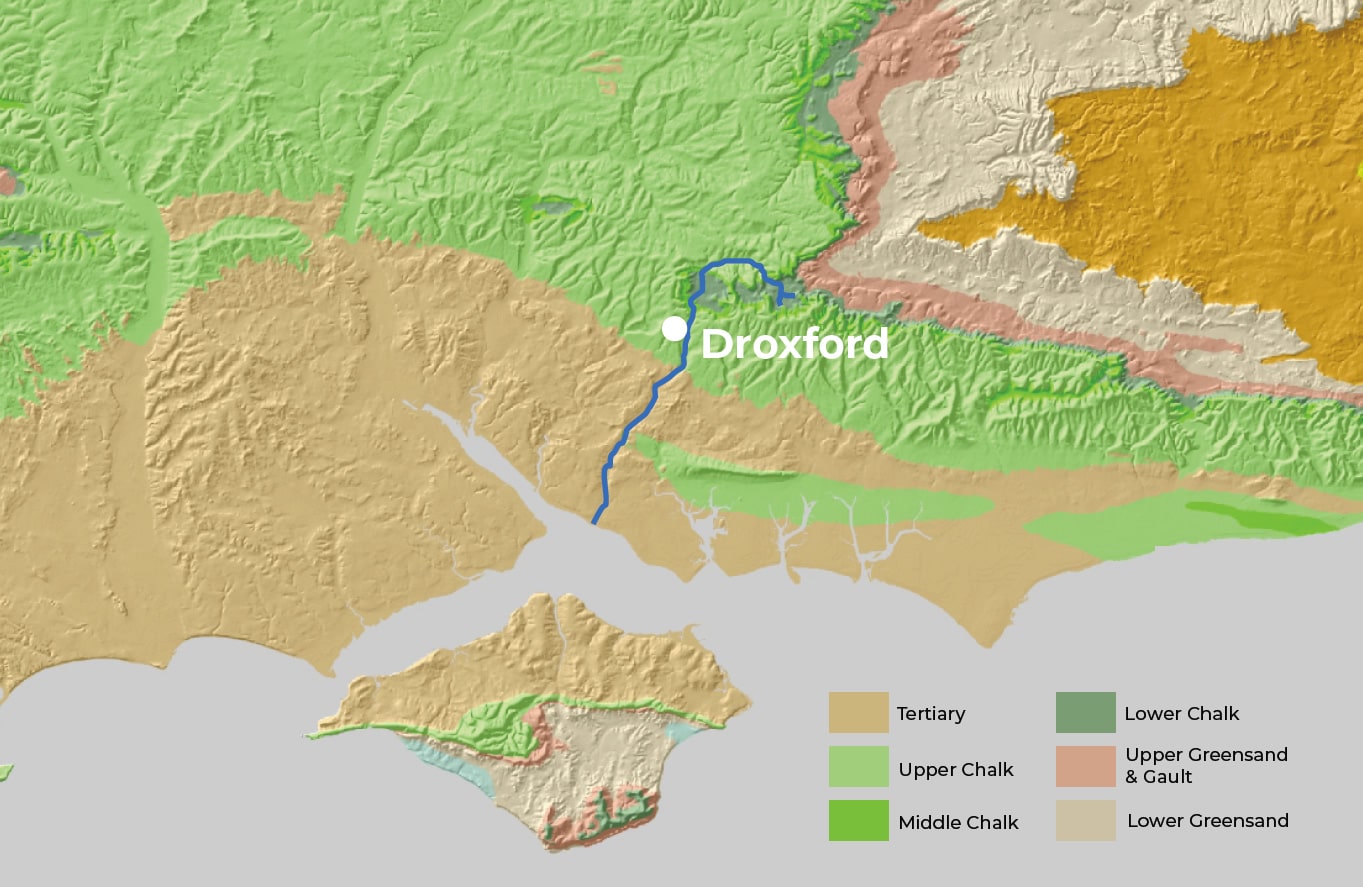
Modified From Andrews, I.J. 2014. The Jurassic shales of the Weald Basin: geology and shale oil and shale gas resource estimation, British Geological Survey
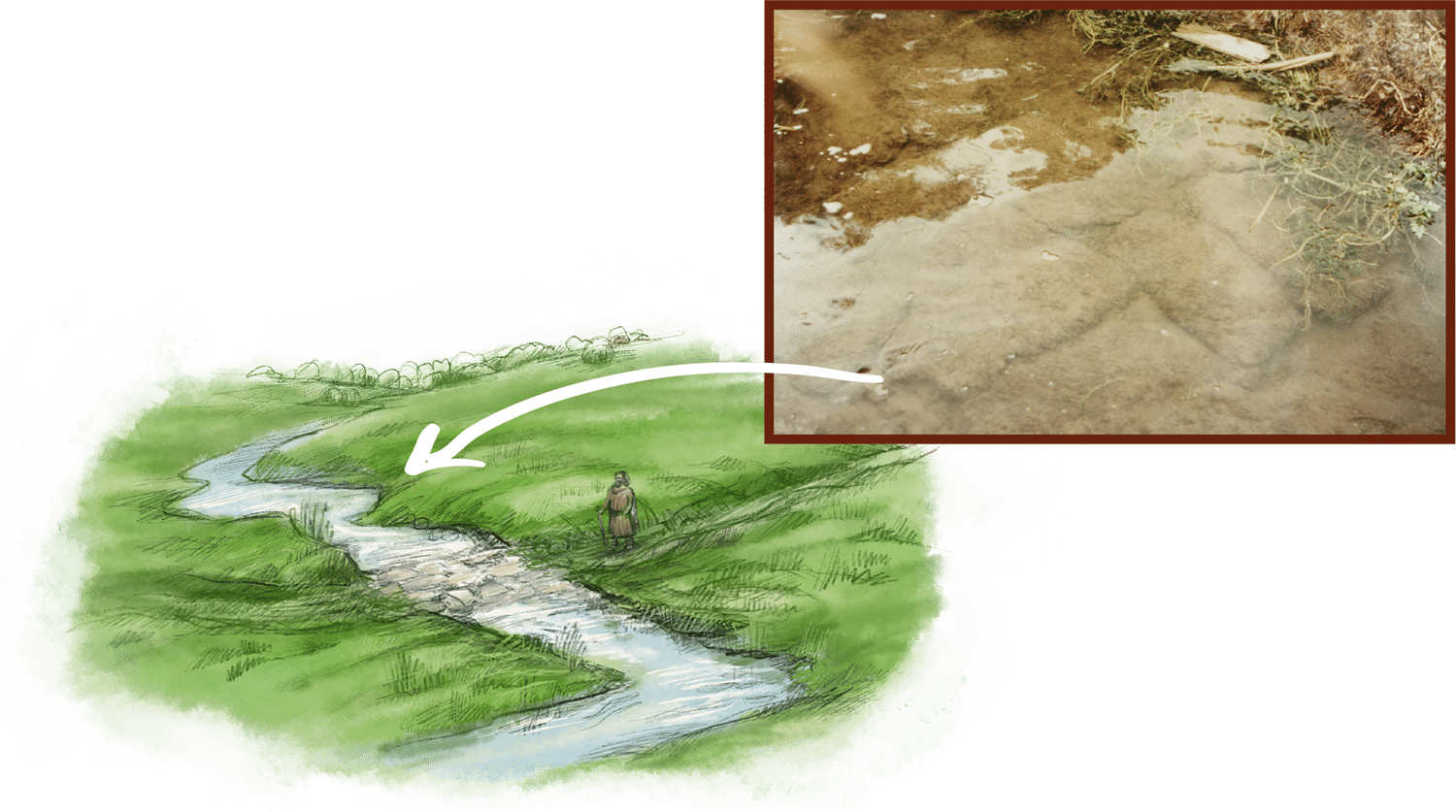
Photograph by Gordon Hope
Illustration by David Goodman
Practicable places to cross the Meon were highly valued. Fords here at the high point of the river’s navigability made this an important location, offering safe passage for people and their livestock.
Droxford was first known as Drocenesford. “Droce” (plural “drocen”) seems to have been a local name for shallow dry valleys or combes, such as Droke Watton. Some of these “drocen” became trackways to fords on the river, hence Drocenesford.
This was a natural intersection where the valley route crossed trackways leading up onto the chalk downs. Travellers would have broken their journeys here. In time this led to permanent settlement and the establishment of a community.
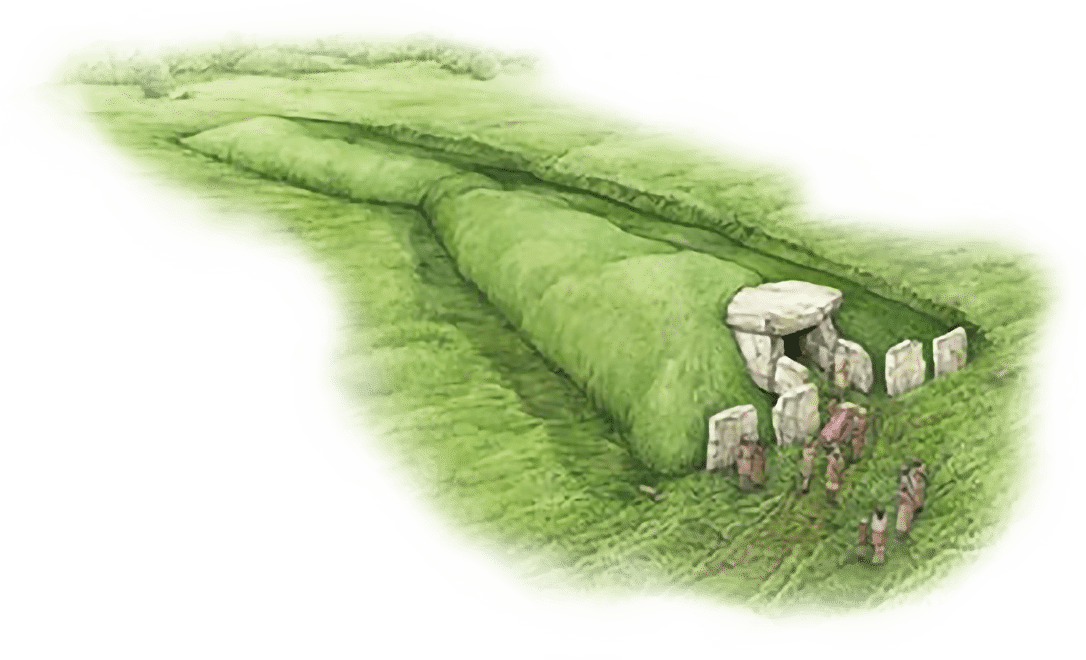
© Historic England, Ref: IC236/001
Evidence of Roman occupation was discovered at nearby Meonstoke in the 1930s, during the construction of the A32. Fourth century remains of a Roman building were found near the river bank. A section of its facade was removed to the British Museum in 1987.
Recent excavations (2015-2019) near the same site have yielded further finds. A rare hexagonal Roman structure seems to have been a temple or shrine since Iron Age times. Remains of a bath house and mausoleum have also been uncovered.
Roman coins and possible evidence of a Roman fort were earlier discovered in Droxford itself.
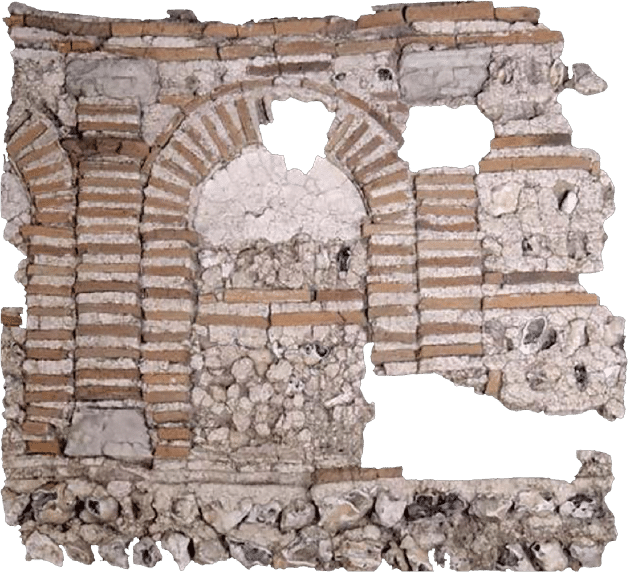
© Trustees of the British Museum
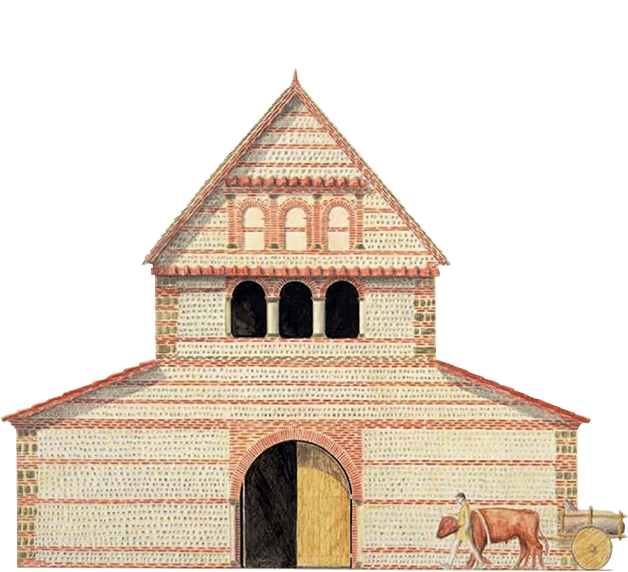
East Dorset Antiquarian Society
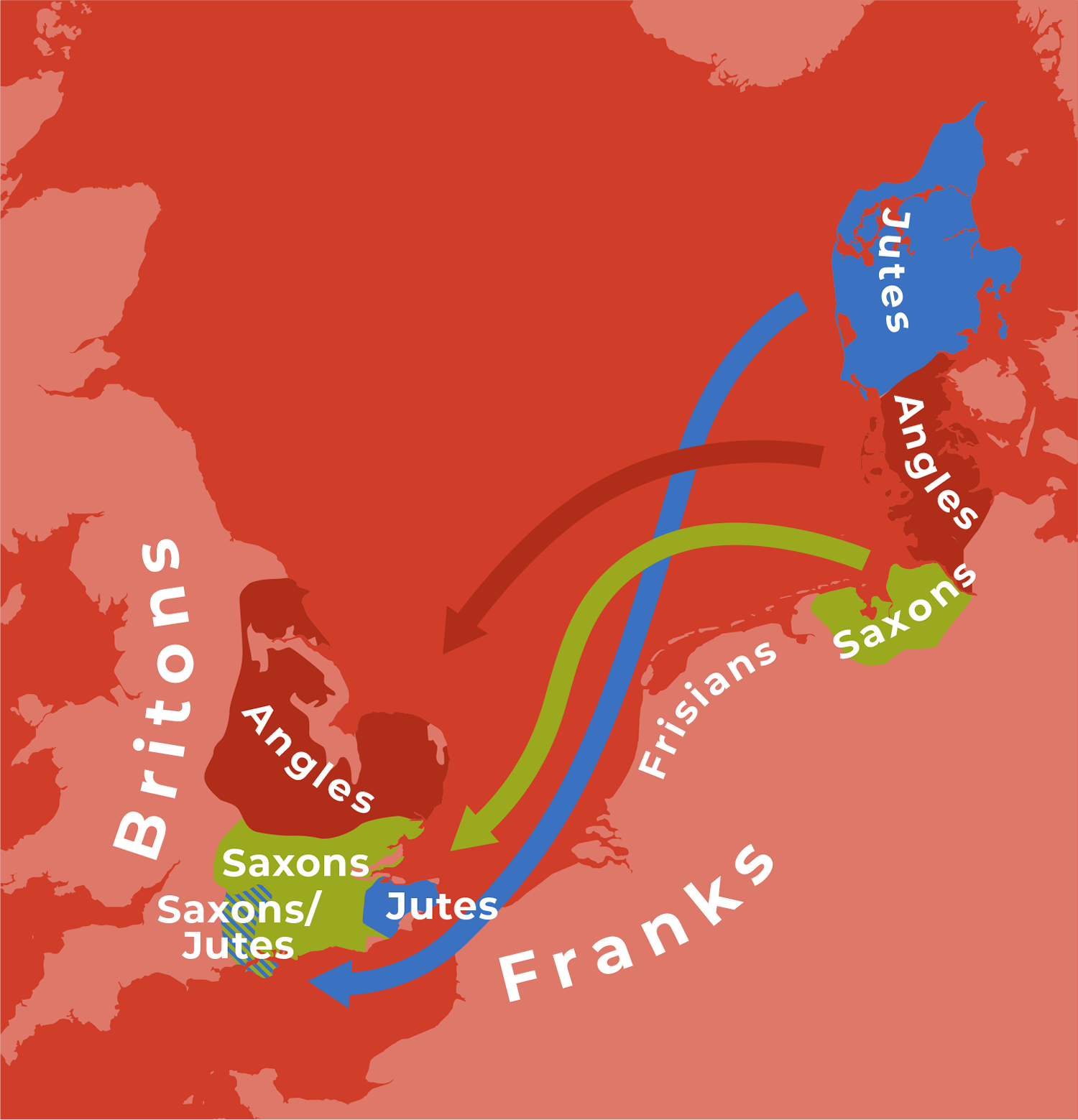
The 5th century saw England widely settled by Saxons, Angles and Jutes, seeking better land to farm. In this area it was largely Jutish people, from modern day Denmark, who established the land of the Meonwara (Meon people).
or seven centuries they farmed this valley from East Meon to the Solent. By the end of the age of Saxon England something recognisable as “traditional English farming” had emerged and villages such as Droxford had started to develop.
Most people were involved in agriculture, to provide for their own needs and to generate produce that paid the rent as markets started to grow. Vessels navigated the Meon up to Droxford Mill, taking flour and other goods down river to Titchfield Haven, then on to the ports of Hamwic (Southampton) and Portesmuða (Portsmouth).
For more on Saxons in the Meon Valley visit www.saxonsinthemeonvalley.org.uk
During construction of the Meon Valley railway line between 1900 and 1902, a surprising discovery was made just across the river from Droxford. Human remains were unearthed on a small hill near to the new Droxford station. British Museum experts established that this was a major Saxon burial site. Unfortunately the excavation work had damaged about 200 graves.
It wasn’t until 1974 that an archaeological dig accurately revealed the extent of this 6th century Saxon cemetery, discovering a further 41 intact graves of men, women and children. The burials included artefacts of a pagan community, such as spear heads, knives, brooches and pottery.
See further information on Droxford’s Saxon cemetery at www.hantsfieldclub.org.uk
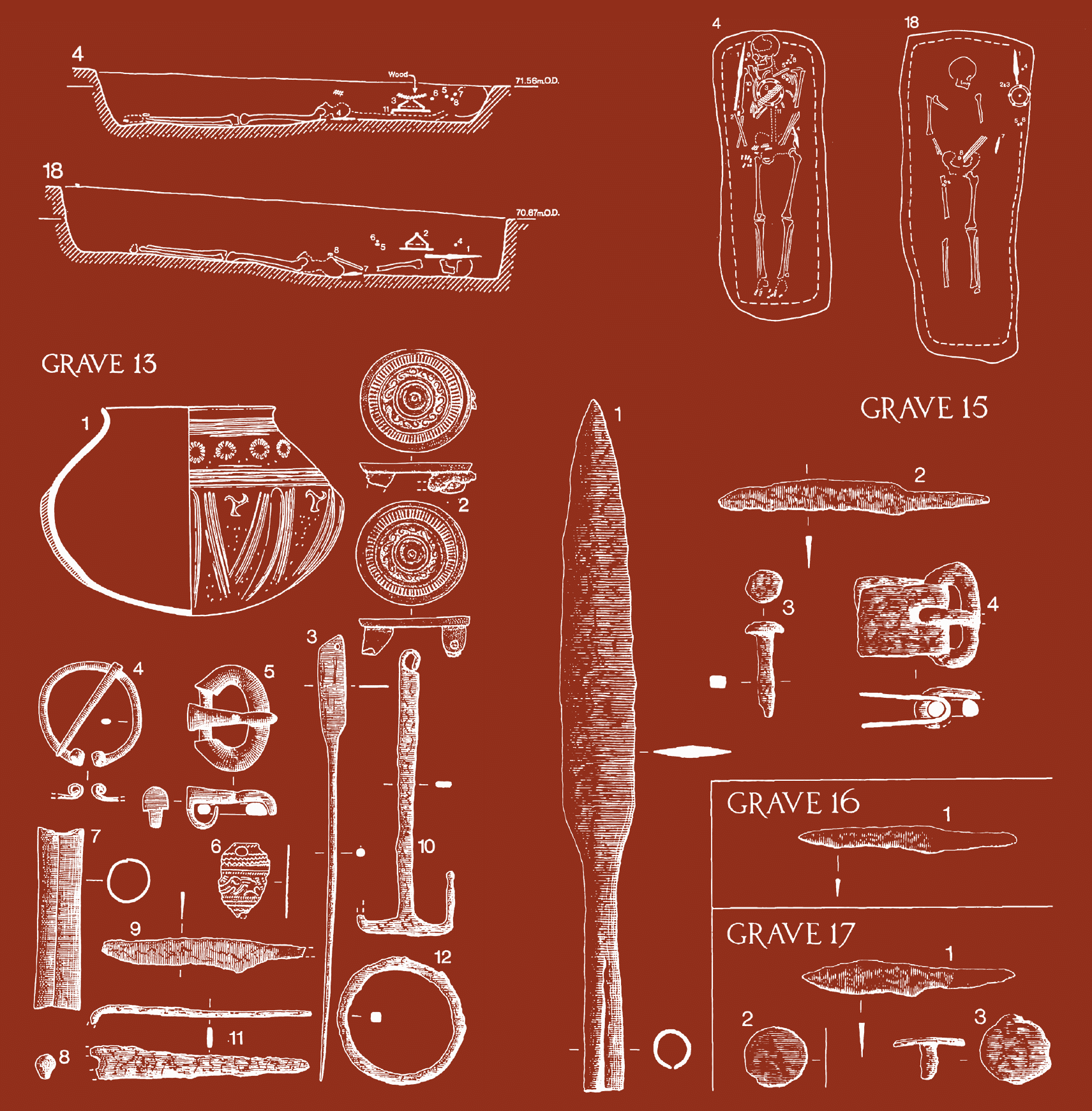
Photo and illustrations, Droxford Saxon Cemetery, Fred Aldsworth, 1979 ©Hampshire Field Club and Archaeological Society
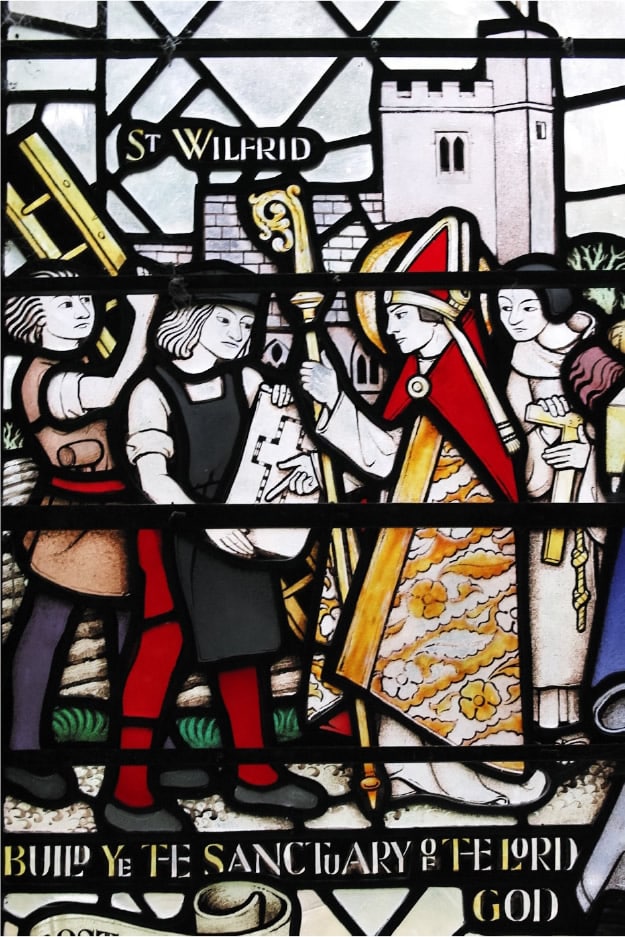
This was one of the last places in England to be touched by the Christian religion. According to Bede, venerable chronicler of Dark Ages life, the 7th century Saxons and Jutes of the Meon Valley were “ignorant of the name and faith of God”.
Enter Wilfrid, one of the great Christian evangelists of the age. He lived among the people of the Meon Valley from 681 to 686, bringing not only the word of God but also practical advice. Wilfrid taught the locals how to improve their fishing skills. Their hunger assuaged, folk now paid attention to his teaching.
Born in 634, Wilfrid was an inspiring figure, a pillar of the church as it sought to establish Christianity in a pagan land. Educated at Lindisfarne and Rome, he joined the Benedictine order of monks in Ripon, where he built a Romanesque basilica. Its original crypt remains intact beneath Ripon Cathedral today. In 664 Wilfrid became Bishop of York. His Meon Valley exile was the result of conflict with the Archbishop of Canterbury over plans to split up his York diocese. He was Bishop of Selsey from 681 until his death in 709.
To follow in Wilfrid’s footsteps visit www.wilfrid-meon-pilgrimage.co.uk
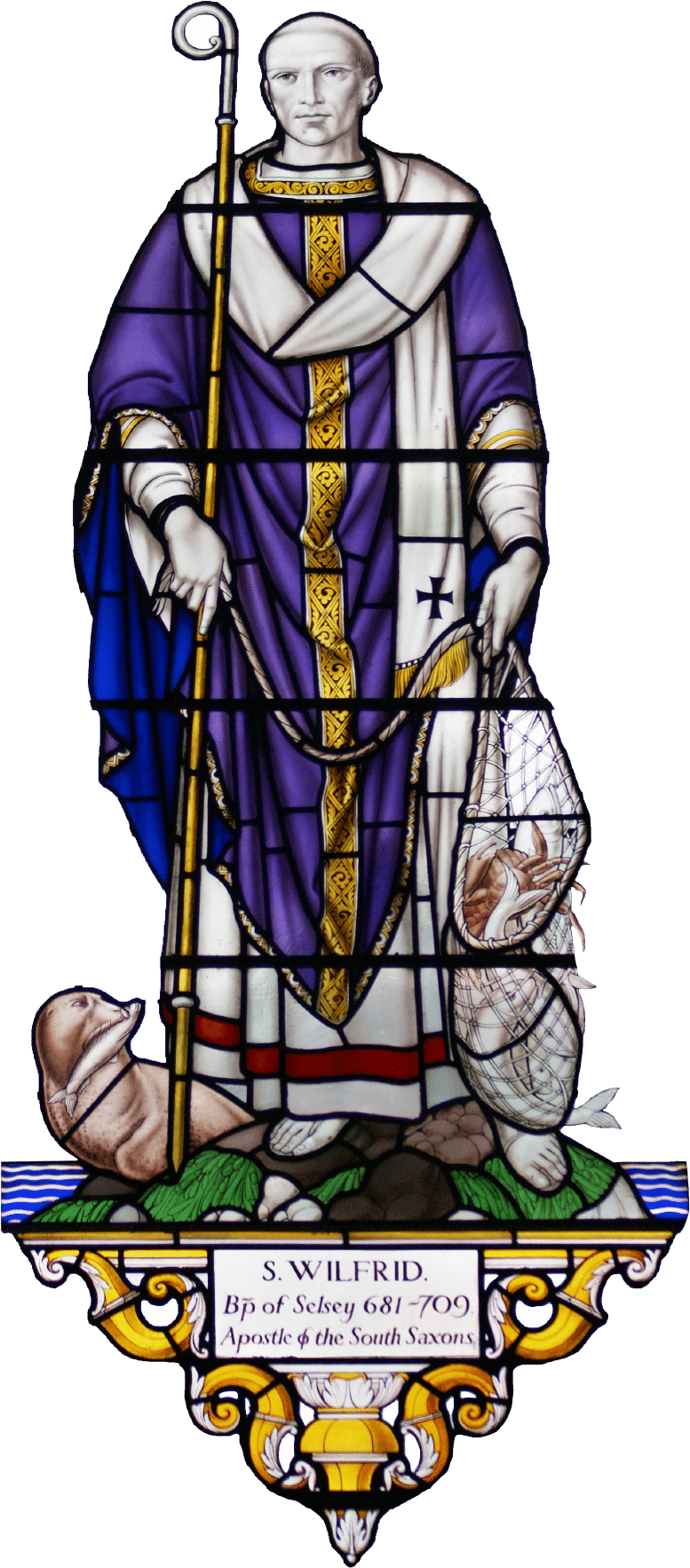
Photograph by Peter Green
Written by Ivor Coleman, Designed by David Goodman